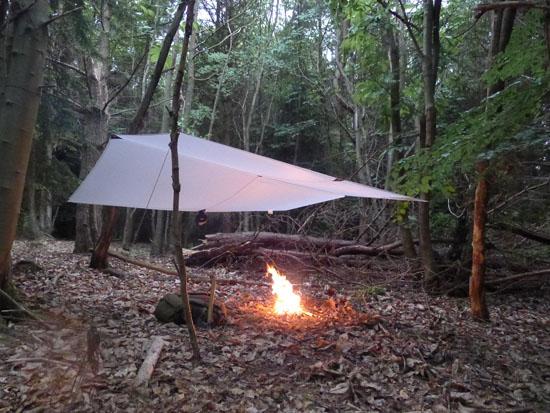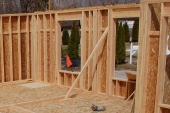




 2
2




 1
1




Glenn Herbert wrote:"On horseback" implies that weight is not a critical issue, so I might try a substantial canvas cover, like the old army shelter halves. As long as a fire was kept small and contained, and the canvas was checked regularly, you wouldn't risk instant conflagration, or individual sparks eating through the shelter.
I would also take some sort of lightweight rocket stove, so combustion could be contained and protected. This would let a smaller fire be maintained than if it sprawled out on the ground. Or if the terrain and climate allowed, dig a fox/Dakota stove each time you set up camp.

 i really don't wanna take our tents in...i would rather rough it just a little more...and the canvas is so much thicker than a tent from the store...and i want a fire inside...thus the tee pee...thought to...it would be a good place to store our gear...(saddles, etc) while camped...for our first ride, we will probably ride in for a day...camp a few...then ride back out...any thoughts???
i really don't wanna take our tents in...i would rather rough it just a little more...and the canvas is so much thicker than a tent from the store...and i want a fire inside...thus the tee pee...thought to...it would be a good place to store our gear...(saddles, etc) while camped...for our first ride, we will probably ride in for a day...camp a few...then ride back out...any thoughts???
 4
4








Moderator, Treatment Free Beekeepers group on Facebook.
https://www.facebook.com/groups/treatmentfreebeekeepers/









Michael Cox wrote:What about a simple tarp tent, rigged between trees? Hammock and good sleeping bag gets you up off the ground. The tarp gives a huge degree of flexibility for layout in different weather conditions, and gives you a chance to have a small fire in, or very near, your shelter if needed.
 wanna share
wanna share  love that campfire!!! oh, i can almost just be there by closing my eyes!!!
love that campfire!!! oh, i can almost just be there by closing my eyes!!! 2
2




 It had a small tear we never did find. We do know it was there because we woke up in two inches of water.
It had a small tear we never did find. We do know it was there because we woke up in two inches of water.




Moderator, Treatment Free Beekeepers group on Facebook.
https://www.facebook.com/groups/treatmentfreebeekeepers/









Moderator, Treatment Free Beekeepers group on Facebook.
https://www.facebook.com/groups/treatmentfreebeekeepers/






|
Think of how dumb the average person is. Mathematically, half of them are EVEN DUMBER. Smart tiny ad:
The new gardening playing cards kickstarter is now live!
https://www.kickstarter.com/projects/paulwheaton/garden-cards
|







